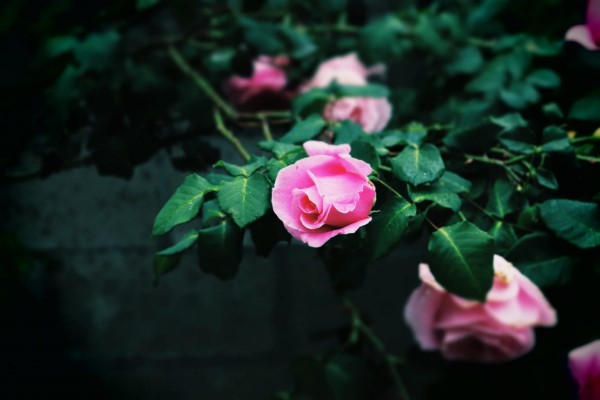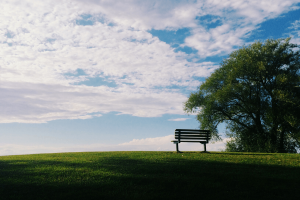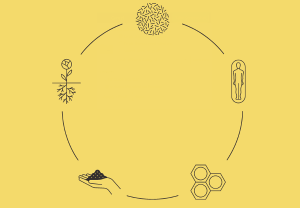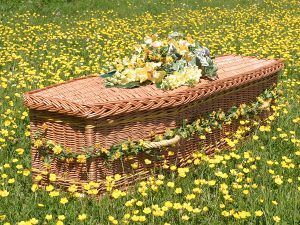Are you planning for a green funeral? Our friends at Ethical.net continue to explore sustainable funeral options, including green burials, coffins, burial sites, wakes and more.
Catch up on Part 1 here.
While some promising options do not involve burial, there are many benefits to a natural and sustainable burial; in spite of the range of options, more and more people are choosing this for themselves or their loved ones.
A sustainable, natural burial differs from a traditional burial in involving no embalming. The funeral industry estimates between 50% and 55% of cadavers in the UK undergo some form of embalming so they can be viewed by relatives. But the future of embalming is uncertain, especially since the EU added formaldehyde to their list of restricted carcinogens and mutagens.
Refusing embalming (which is already prohibited in the Jewish and Muslim faiths) eliminates concerns about pollutants and toxins from the process entering the environment.
A natural burial will also involve greater care over the type of coffin. (A number of natural, biodegradable coffins and shrouds are explored below.) Green burials will never use harmful or polluting materials in the shroud or coffin; everything placed in the ground will simply and harmlessly decompose.
Sustainable wood coffins
One option for a sustainable burial is simply to opt for a traditional wooden coffin – but one made from a more ethical choice of wood, from sustainably managed woodlands and forests.
Many traditional, high-end coffins are made from mahogany or other exotic hardwoods, contributing to deforestation and the destruction of precious rainforest trees. What’s more, such timber has to be shipped great distances.
Alternatively, eco-friendly wooden coffins use sustainable wood grown much closer to home. Just be sure, if choosing this option, that the source really was sustainable. You could also choose a coffin made from 100% reclaimed and upcycled solid wood.
Wicker coffins
Another option is a wicker willow coffin, which, like wooden coffins, are 100% natural and biodegradable. Willow grows quickly, and can be coppiced to ensure that it remains a truly renewable resource. Another advantage is that it can be readily grown and managed in the UK.
Bamboo coffins
A wide range of woven bamboo coffins are also available for green burials. A great eco-friendly material, bamboo never needs replanting, since it grows back rapidly after being cut – up to a metre a day, in some species. Strong and pliable, with a greater tensile strength than steel, it produces more oxygen than any other plant for its size to weight ratio. Planted in large groves, bamboo can also store four times the CO₂ as a similarly-sized stand of trees.
When choosing a bamboo coffin, however, it is important to consider where the bamboo was grown and where the product was made, and the carbon cost of bringing it to the UK (likely from China). Some bamboo products will be better than others when it comes to both their human and environmental ethics.
Other natural woven coffins
In addition to willow or bamboo coffins, you can now also find a wide range of other coffins made by weaving natural plant materials, including:
- Banana leaf
- Cane
- Seagrass (water hyacinth)
- Pandanus (wild pineapple)
- Abaca
These will all simply rot away, leaving nothing to plague the environment or cause problems for future generations.
Cardboard coffins
Particularly if money is a concern, a simple, eco-friendly cardboard coffin could be the perfect solution. You can keep things very simple with a plain cardboard design (which could then be added to or decorated in a unique way); alternatively, opt for a pre-designed picture option or wood-grain effect.
As with the previous options, cardboard will simply rot away into the soil; ideal for a green burial. But when it comes to overall sustainability, remember that the cardboard is only as sustainable as its source, so ensure that the source was truly sustainable, and that it was sustainably produced and untreated.
Wool coffins
You can also choose a coffin made from natural wool (strengthened with a recycled cardboard liner) – another 100%-biodegradable option. Or how about the beautiful Bellacouche Leafcocoon alternative eco coffin, made from wool felt.
Alternatively, you could choose to forgo the coffin altogether; a shroud made from a natural, biodegradable fabric could be another great earth-conscious option for a green burial. Many people are surprised to hear this, but there is no legal requirement in the UK for a coffin or casket. The body should be covered, but how you do so is up to you. The benefit of using a shroud rather than a coffin is that you or your loved one will return even more quickly to the soil. This option, however, will depend on possible restrictions at the chosen burial site (or crematorium).
Choosing a burial site
When it comes to a green burial, the burial site is as crucial as the materials and methods chosen with regard to the body.
Burial at sea
Many people have an image of being buried at sea. This may be difficult in the UK: sea burial is permitted in a few areas, but a license is required, and only a few are granted each year.
Burial in a natural woodland or meadow
The number of green burial sites around the UK is increasing, as is their popularity with those wanting to be sustainable and natural in death.
Some of these green burial sites are managed by local authorities, some by individual private landowners, and some by large businesses. As such, they differ extremely in what they offer, how they are run, and their longer-term plans. If you are looking for a green burial ground, it is best to opt for one that is a member of the Association of Natural Burial Grounds, which adhere to various codes of practice to maintain suitability for natural, sustainable burial.
You may choose to be buried in an existing woodland, field sites where new woodland is being established, or other tranquil environments such as wildflower meadows. The sustainability of these sites hinges upon the most natural and ecologically sound approaches to ecosystem management.
It is important for a natural burial site to consider not only the short term but also long term sustainability. What will happen to the site when it is ‘full’? How will a site support itself financially and be maintained when funds from burials are no longer coming in? Arguably, a site that can support itself in another way once full is the best choice; for example, coppicing could provide an ongoing income from the land. Alternatively, agricultural sites may still be grazed or managed for various other yields. Diversification from agro-forestry into natural burial could be a good synergy.
Burial on private land
You might be surprised to learn that it is legal, in many cases, to be buried on private land in the UK. So if you have a large garden, or a substantial piece of woodland or other land, natural burial may be possible there. You or your loved one could potentially rest in peace under a tree, or in another favourite spot on your own property.
Certain regulations have to be followed, mostly relating to water sources, water courses, etc: bodies must be a certain distance away from springs, waterways, irrigation or drainage channels. They must also be at a certain depth below ground, and the location must be noted.
Whichever site is chosen for a natural burial, we need to move away from the idea that bodies be corralled in cemeteries, and take a more natural, holistic approach. When we die, our bodies should not ‘take up space’ and be permanently memorialised with non-living shrines. Instead, they can feed natural systems. People can be memorialised through the thriving natural systems they sustain and that grow from their physical remains. Personally, I take comfort from the idea that when I die, I can help create and sustain new life. In a natural, green burial, we should try to enable this return to nature as much as possible.
A sustainable wake
A sustainable funeral is not only about what is done with the body after death. If you want the entire funeral to be green, ethical, and sustainable, the wake or other celebrations need to be considered as well.
Sustainable funeral food
What food will be served at the wake? As with all the food we eat, the best and most ethical option is to choose food that is:
- Grown locally
- Seasonal
- Organic and sustainably grown.
Also consider reducing or eliminating meat from the menu at a sustainable funeral. And if you do opt for meat or dairy dishes, these products should be sourced from farms with good practices in terms of animal welfare and ecological matters.
Of course, you should also try to follow the five ‘R’s: refuse, reduce, reuse, repair, and recycle. Do what you can to eliminate waste in all its forms, avoid plastic packaging where possible, and donate food waste to prevent it from being thrown away.
Sustainable funeral flowers
When it comes to flowers for the funeral, less is more; maybe ask guests to donate to a charity rather than bringing flowers. Even without a specific request, guests could still consider other, more eco-friendly alternatives to a flower arrangement: a living plant or tree, for example. But small acts of kindness like bringing a few meals to the bereaved’s house, or even just being there for a chat, can mean a lot more.
Those flowers you do choose for a sustainable funeral should be as eco-friendly as possible. This means:
- Choosing cut flowers that are local and in season.
- Opting for wildflowers rather than flowers that are hot-house grown.
- Dried flowers and foliage for more choice if the funeral is taking place in winter.
- All-natural arrangements without floral foam/Oasis or any other harmful/plastic components or packaging.
Sustainable transportation
It is inevitable, when someone dies, that people will have to travel to pay their last respects. Encourage guests, if you can, to use more eco-friendly methods of transportation to reach the funeral: for example, taking a train rather than a plane. Encourage car-sharing to cut this carbon footprint, including when travelling from funeral to wake: use as few cars as possible, rather than travelling individually.
Sustainable house clearances
A death in the family often means being tasked with clearing a home. Of course, the first stage will involve sorting these belongings and deciding what you and other family members would like to keep. After that, however, it is likely that there will be plenty of unwanted items. When sustainability is a key goal, make sure nothing is wasted or sent to landfill; instead, consider:
- Donating unwanted items to a charity.
- Selling secondhand items online.
- Recycling, upcycling, or repurposing old items to give them a second life, or finding someone else who can do these things for you.
Once the home has been cleared, clean it using eco-friendly, natural cleaning products.
Sustainable wills
Finally, if contemplating your own death, an additional way to make it sustainable is through having a will drawn up. Consider leaving money or property to a charity that will help you continue to have an ethical impact after you are gone.
Main image by Rye Kim on Unsplash. Find the original article by Elizabeth Waddington here on the Ethical.net blog. Learn more in our introduction to a sustainable funeral.
 About the author
About the author
Ethical.net is a collaborative platform for discovering and sharing ethical alternatives, whether purchasing from a social enterprise, thrift shopping, or learning how to fix your old phone instead of buying a new one. They aim to make ethical the new normal.





10 Comments
Worth checking if there might be an electric hearse locally too with companies like this one specialising in EV funerals – https://www.electrichearse.co.uk/
Interesting article. To add my pennyworth, of choice I’d prefer being buried at sea wrapped up in my hammock (Hemp canvas) with a nice big shell / cannonball at my feet – that would one piece of military ordinace that would be used properly and not used to destry things – just make sure ’tis defused first. The biggest problem with a sea burial is that it has been illegal world wide for some time to dispose of rubbish at sea (something to do with the environment I believe) but there are ways! Don’t forget the last stitich through the nose to make sure I really am dead! And don’t forget the unlimited supply of rum to the sailmaker until the jobs done!
Mike – definitely a green funeral. It’s still possible to be buried at sea, although not easy.
Thanks Dave, it was mentioned in the narrative above but I get the feeling it might be frowned on for various reasons – it probably is if you have got to work at it. I do know that doing things out of the “ordinary” is to say the least not liked by them as think they control us. I’m sure there are bodies scattered arond the world that can’t be got home to the place they wish to be buried (have their body disposed of) I know of one. Just a thought but trotting down to the town hall or wherever and saying I wish to be buried at sea would bring out the comment “you can have your ashes scattered from . . . . ” Which is NOT a green funeral nor what I’d wish!
Mike -yes, cremation definitely not green (the energy required / emissions etc.). A friend recently told me they were going to cremate a deceased pet. I couldn’t say anything, because they were upset, but I thought ‘oh dear, what a terrible trend.’
Dave – going on from the burial at sea, on checking spreading ashes seems OK as such (maybe even the so called powers that be realise they have done enough damage in the cremation alone) but actually burying the body requires a lot more than just getting a licence. It seems the coffin needs to conform to certain criteria (which from a quick glance seems to cancel out the “green” side of the equation) all ends up looking rather sad really, There are also certain locations that can only be used – more travel and CO2 gases etc. Coming to the cremation of pets as you say awkward to say anything but what a wasteful way to go.
Without sounding too crass there is an ancient believe that when planting something like a tree it does better if you place a dead body under the roots – something to do with giving the plant needed nutrients – possible not the thing to tell a grieving family but in some ways knowing that “Granddad” is buried under that tree and is giving it life – look how magnificent it is – sounds sensible to me! But how do we get people to use that system let alone even think about it!
No, wicker / cardboard coffins are fine – https://www.lowimpact.org/lowimpact-topic/green-funerals/ – plus woodland burial sites springing up all over the place. As you say, planting a tree is a double whammy. I also don’t think anyone can stop you being buried on your own property as long as it’s at least 10 metres from a watercourse – unless that’s changed.
Dave – I was only referring to so called burial at sea coffins rather than all coffins, sorry if I didn’t make that clear. It seems the burial at sea coffin requirments are rather onerous to say the least! From the Government website these include – solid softwood only, no plastic, lead, copper or zinc.It must have some 50 holes drilled through out to allow the thing to sink – these must be between 40 to 50 mm in size! They need some 200 kgs of either iron steel or concrete to get the thing to the bottom quickly all bound with mild steel bands spaced at the most some 300mm apart, weight to be evenly distributed to prevent it turning vertically and so it goes on. I’m surprised there would be any room left for the body! At least it’s all biodegradable – eventually! So my idea of being buried sewn up in a hammock with a shell at my feet could be deemed adequate, by the definition of the UK government it isn’t – when you consider the number of British (well in a lot of cases they would be British if they where sailing on a British ship, but thats a different story, many were of course not, especially on warships were adequate manpower was always something of a problem – hence the use of the “Press Gang”.
With that I think tis time I gave it a rest – for one thing you have a lot more to do than pander to this awld fool and generally I think others will be getting a triffle fed up by now! I could of course go on but for everybody elses sanity won’t!
Ah, burial at sea coffins, sorry. It was all looking pretty sustainable until the 200kg of iron, steel or concrete. I wonder if stones would be acceptable.
I doubt it – it is a government regulation after all! Probably find the stones would be OK as ‘aggregate’ in the concrete block! But concrete, that in itself is a No-No for the environment – lots of CO2 and other funny things given off when preparing that stuff, not counting the cancerogenic effect of using it (Concrete burns and the like – nasty stuff – there is on record a report of an operative doing a concrete pour who got wet concrete on his “Jeans” and did nothing about it – lost both his legs, they had to be removed or it would have been his life!)